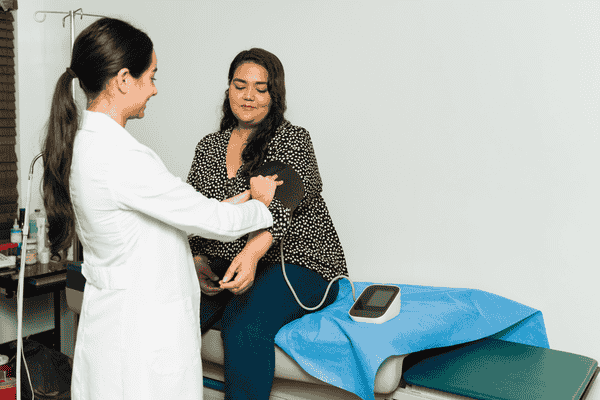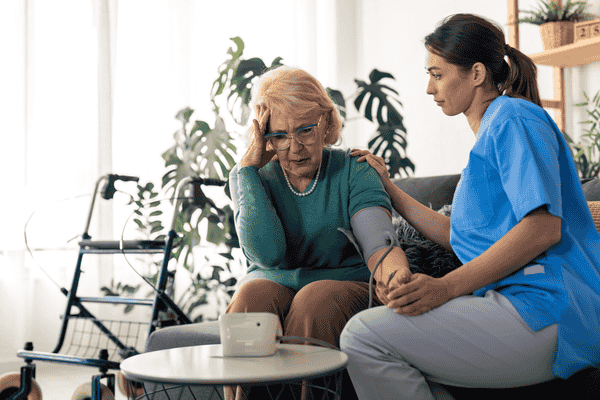Have you ever wondered why some individuals face the challenge of unraveling the complexities of Parkinson’s Disease? Picture this: everyday tasks like buttoning a shirt or taking a sip of water becoming increasingly arduous. These are just some of the struggles individuals with Parkinson’s Disease encounter daily. Fear not, as we delve into this guide, we aim to shed light on the causes and symptoms of Parkinson’s Disease, offering you a roadmap to navigate through the maze of uncertainties.
Introduction to Parkinson’s Disease
Imagine your brain as a finely tuned orchestra, where each instrument plays a crucial role in creating harmony. Now, envision a scenario where the conductor starts to lose control, causing the once harmonious symphony to become disjointed and chaotic. This is akin to what happens in the brain of someone with Parkinson’s disease. Named after James Parkinson, the English physician who first described the condition in the early 19th century, Parkinson’s disease is a neurodegenerative disorder that impacts the central nervous system, primarily affecting movement control. It is characterized by the progressive loss of dopamine-producing brain cells, leading to motor and nonmotor symptoms.
The Role of Brain Cells and Dopamine
In a healthy brain, dopamine plays a crucial role in facilitating smooth, coordinated movements. Dopamine is a neurotransmitter responsible for transmitting signals between different areas of the brain that control movement. However, in individuals with Parkinson’s disease, these dopamine-producing cells gradually degenerate, leading to a reduction in dopamine levels and causing motor symptoms like tremors, rigidity, bradykinesia (slowness of movement), and gait disturbances. As the disease progresses, individuals may also experience nonmotor symptoms such as sleep disorders, low blood pressure, and urinary incontinence.
Causes of Parkinson’s Disease
Understanding the causes of Parkinson’s disease is crucial in developing new treatment strategies and potential preventive measures. Here are some key factors that contribute to the development of Parkinson’s disease:
Genetic Mutations
Genetic mutations play a significant role in certain cases of Parkinson’s disease. Imagine inheriting a recipe for a cake, but instead of sugar, the recipe calls for salt. Similarly, mutations in specific genes, such as Parkin, PINK1, and LRRK2, have been identified as risk factors for developing the condition. These genetic abnormalities can disrupt the normal functioning of brain cells, leading to the onset of Parkinson’s disease. In families with a history of Parkinson’s, these mutations may be passed down from one generation to the next, increasing the likelihood of developing the disease.
Head Injuries
Picture a soccer player repeatedly heading the ball, or a boxer taking numerous blows to the head. Head injuries, especially those involving trauma to the brain, have been identified as a potential risk factor for Parkinson’s disease. Research suggests that repeated head injuries or severe traumatic brain injuries can increase the likelihood of developing the condition later in life. The brain’s delicate structure can be compromised by such injuries, leading to the degeneration of dopamine-producing cells over time.
Environmental Exposures
Imagine living near a farm where pesticides are regularly sprayed, or working in an industrial setting with constant exposure to chemicals. Environmental factors, including exposure to certain toxins, have been linked to an increased risk of Parkinson’s disease. Pesticides, herbicides, and industrial chemicals have been identified as potential contributors to the development of the condition. Long-term exposure to these substances can affect the dopamine-producing cells in the brain, leading to the characteristic symptoms of Parkinson’s disease.
While these factors have been linked to Parkinson’s disease, it’s important to note that not everyone exposed to these risks will develop the condition. Parkinson’s disease is a complex interplay of various genetic and environmental factors, and further research is needed to fully understand the underlying mechanisms.
Symptoms of Parkinson’s Disease
Parkinson’s disease symptoms vary widely, impacting both motor and nonmotor functions. Understanding these symptoms is crucial for early detection and effective management.
Motor Symptoms
- Tremors: One of the most noticeable signs of Parkinson’s, tremors typically start in the hands, fingers, or thumbs. Imagine holding a cup of coffee and watching your hand shake uncontrollably. These tremors often occur at rest and can worsen with stress or emotional excitement. They may start in one limb and gradually spread to other parts of the body, making daily tasks increasingly difficult.
- Rigidity: Muscle stiffness leading to decreased range of motion. Imagine trying to bend a thick, rusty wire. This rigidity can affect any part of the body, causing discomfort and limiting movement. It can also contribute to a stooped posture and facial expressions that appear rigid or mask-like.
- Bradykinesia: Gradual slowing down of movement, affecting tasks like walking, writing, or even simple daily activities. Imagine trying to move through a thick pool of molasses. This slowness can make everyday activities feel like monumental tasks, often leading to frustration and fatigue.
- Postural Instability: Increased risk of falls due to balance issues. Picture trying to walk on a tightrope with a strong wind blowing. This instability can lead to frequent falls and injuries, necessitating the use of mobility aids or assistance from others.
- Gait Disturbances: Shuffling steps, reduced arm swinging, and shortening of stride length. Imagine trying to walk with your shoelaces tied together. These disturbances can make walking a precarious activity, increasing the risk of tripping and falling.
Nonmotor Symptoms
- Sleep Disorders: Insomnia, vivid dreams, restless leg syndrome, or excessive daytime sleepiness. Imagine lying in bed, unable to find a comfortable position, or being awakened by vivid, unsettling dreams. These sleep disturbances can leave individuals feeling exhausted and irritable.
- Autonomic Dysfunction: Low blood pressure, urinary incontinence, and constipation. Picture standing up quickly and feeling lightheaded or struggling with frequent bathroom trips. These symptoms can significantly impact daily life and overall well-being.
- Cognitive Changes: Memory, attention, and executive function difficulties in later stages. Imagine trying to solve a puzzle with missing pieces. These cognitive changes can affect an individual’s ability to plan, make decisions, and remember important information.
- Psychiatric Symptoms: Depression, anxiety, and apathy. Imagine feeling a constant cloud of sadness or unease. These psychiatric symptoms can exacerbate the challenges of living with Parkinson’s and impact overall quality of life.
- Sensory Symptoms: Reduced sense of smell and vision changes. Picture walking into a flower shop and being unable to detect the fragrant blooms. These sensory changes can diminish the enjoyment of certain experiences and affect safety.
Conclusion
Understanding Parkinson’s disease, from its causes to its symptoms, is essential for early detection and effective management. By recognizing the signs and identifying potential risk factors, individuals and their support teams can work together to improve quality of life and manage the challenges posed by Parkinson’s disease. Seek medical advice if you notice any symptoms and explore resources and support networks to navigate the complexities of this condition.













